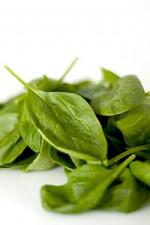What PABA Vitamins Are and What It Does
| Share on Facebook | Share on Twitter | Share on Google+ |
What is PABA?
Para-amino benzoic acid, more commonly known as PABA, is a non-protein amino acid widely available in nature. It can be found in food sources such as liver, eggs (whole), molasses, rice, what germ and spinach. PABA is often referred to as Vitamin Bx (part of the Vitamin B complex family), but it is neither an actual vitamin nor is it an essential nutrient for humans.
The para-aminobenzoil moiety of PABA renders it a Vitamin B complex factor and a component of folacin. It does not help produce folacin so that scientists does not consider it important, but PABA has been suggested to contribute to a lot of processes in the body.
Most Popular Use of PABA
PABA is widely used as a topical sunscreen (i.e. Sunscreen with PABA), as it has the ability to absorb ultraviolet rays from the sun. It is thus the best known ingredient found in many sunscreens today. Aside from providing protection from harmful UV rays, PABA has been seen to play other important roles in the body and is thus marketed as PABA vitamins.
Suggested Benefits and Effects of PABA

The PABA vitamin offers several benefits that can be hardly found in other nutrients. First and foremost, it is considered an antioxidant so that they can mop up free radicals that can potentially cause cumulate cell damage and hasten aging. It has also been found to play a major role in limiting depression (which can result from PABA deficiency), reducing fatigue, and reducing inflammatory effects that are related to osteoarthritis (which can be painful and debilitating).
PABA vitamins also improve the protein utilization ability in the body so that it can be good for those seeking to build muscles and lose some weight. This vitamin also has been seen to play a major role in red blood cell formation and the manufacture of folic acid in the intestines.
The effects of PABA as a nutrient and antioxidant involve positive and notable effects on external appearance. PABA has been found to reduce the onset of wrinkles, to keep skin smooth and healthy, and even to restore gray hair to its original color.
Aside from being used as a dietary supplement, PABA is also accepted for use as a remedy for Vitiligo (a condition that is characterized by the depigmentation of the skin), for scleroderma (skin thickening) and for Lupus erythematosus (another skin disorder), but in high dosages which should not be self-administered.
On PABA Safety
There has been no established RDS for PABA vitamins. Most manufacturers recommend daily intakes between 30 to 100 mg. PABA vitamins appear safe at most dosage levels, but recent studies have shown that daily intake of huge amounts starting from 8 grams or more can cause fever, malaise and liver problems.
With its dosage safety and wide range of uses, there is no wonder that PABA Vitamins have been increasingly popular nowadays.
-
Skin CareMen Skin Care
-
Free ResourcesFree eBooks
-
The... patient should be made to understand that he or she must take charge of his own life. Don't take your body to the doctor as if he were a repair shop.Quentin Regestein
-
Featured Health SupplementTotal Balance
 provides a broad spectrum of around 80 of the nutrients that your body needs…including vitamins, minerals, trace elements, antioxidants, amino acids, neuronutrients, bioflavonoids, carotenoids, herbal extracts, enzymes and other complementary co-factor ingredients.
provides a broad spectrum of around 80 of the nutrients that your body needs…including vitamins, minerals, trace elements, antioxidants, amino acids, neuronutrients, bioflavonoids, carotenoids, herbal extracts, enzymes and other complementary co-factor ingredients.
-



















